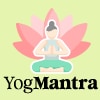YogMantra | Let Yoga be Your Highway to Becoming the Best Version of Yourself – News18
Post-pandemic, ever since the ephemerality of life hit us hard, even the most successful amongst us are looking to be the “best version” of ourselves.
To be our best version is to reach the fullest potential of this life, and this involves first understanding ourselves and then living a life that gives us purpose and peace. This is a call to slow down, find our own true happiness, and do what resonates with one’s core values — aka living authentically.
People who have experienced this kind of growth often share helpful tips and measures to get there. Like they say: write down goals, be disciplined, build relationships, build resilience, manage emotions, learn continuously, let go of limiting beliefs, amplify strengths, remove expectations, network, recognise opportunities, accept help, embrace failure, exercise and other means of self-care.
This often seems overwhelming — where does one begin, and as there exist multiple such lists, do we have time for trial and error?
YOGA HAS A FORMULA
Yoga, which goes beyond physical postures and stretches and works at multiple levels, is a dependable means to get there. The final aim of Yoga is to control the mind and becoming the “best version of ourselves” is a by-product of this journey.
“Once a person starts following the path of Yoga, if he is a businessman, he becomes a better businessman, as well as a better human being, a better husband, a better father. This holistic science causes a total uplifting of all aspects of his consciousness. That’s why Yoga is known as the ‘Culture of Consciousness’ and ultimately, understanding is developed,” states Dr Hansaji Jayadeva, Director, Yoga Institute, Santacruz, Mumbai.
SOLID BASE OF ETHICS, DISCIPLINE, VALUES, RELATIONSHIPS
Yamas (ethical restraints) and Niyamas (discipline or observances) are embedded within Patanjali’s Ashtanga or eight-fold path of Yoga. They are equally embedded within all of us. By just being aware of these ethical guidelines, we begin becoming mindful of them and integrate them into our life. This develops a positive attitude towards others and an understanding of ourselves. With conflicts and tensions thus reduced, energy is freed for focussing on one’s purpose.
Yamas — Ahimsa, Satya, Asteya, Brahmacharya and Aparigraha — are about compassion, moral conduct, truth and non-violence. Niyamas — Shaucha, Santosha, Tapa, Svadhyaya and Ishwara-Pranidhana — emphasise personal observances such as self-discipline, contentment, cleanliness and surrender to a Higher Power.
POWERING STRENGTH, RESILIENCE
Asanas exercise the body gently, so that energy can flow freely within. The inclusion of correct Bhavas or attitudes in Asanas — an innovation devised by The Yoga Institute, Santacruz, where the practices are done regularly with the accompanying attitude — brings in energy at both subtle and gross levels. Thus, personality changes occur.
The Four Bhavas are Dharma (Duty), Jnana (Knowledge), Vairagya (Objectivity) and Aishwarya (Self-Reliance).
PRANAYAMA BRINGS CLARITY & INCREASES EFFICIENCY
Pranayama is one of the most important parts of Ashtanga Yoga. Through breath, we take in ‘Prana’ or energy from the outside and channel it. Yoga masters tell us that when practised regularly, it takes care of not just digestion and elimination, but the body can cure itself of many diseases in early stages.
Pranayama helps calm emotions, which even if generated, are short-lived; rids us of depression and fills us with energy and joy. The deep relaxation experienced reduces the need for sleep.
Excellence in creative pursuits is a natural outcome of Pranayama because of the level of clarity, and the high levels of efficiency it enables reaching.
RELAXATION TECHNIQUES: “MAGIC LAMP GIVEN TO MAN”
Yoga’s conscious relaxation techniques take the game to another level. “It is interesting to know what occurs when we begin to practice relaxation. With each session, a little of our tension will be shed. We become a little less negative and a little more positive; a little less desperate and a little more hopeful… Once we make ourselves acceptable to, and tolerant of, ourselves, much of what has been troubling us thus far appears to lose its sting. Our past failings cease to appear so abominable,” elaborates Dr Jayadeva Yogendra, former director of the Yoga Institute.
“What has taken place within ourselves is a readjustment of our sense of notions and values. We begin to view our own life from a new angle, from a new height. The compensating realisation dawns upon us that after all is said and done, we have also had our share of roses in life, our smiles and joys. That, in the ultimate analysis, our lives are not as bad as we have been imagining.
“From this stage, it is but one more step to make a fresh start in life. Now our health begins to improve, we get a good night’s sleep and we enjoy a good appetite. Our wrinkles are ironed out and our facial expressions become brighter. We are better off for our past lives and are confident of better times ahead. With malice towards none, and with faith in ourselves, we move confidently on to the morrow. Relaxation is a magic lamp given to man, by rubbing which, the genie of positive thinking could be summoned to provide succour.”*
YOGA ADDRESSES ‘KLESHAS’ THAT HINDER PERSONAL GROWTH
As we progress in Yoga, we get more equipped to recognise and mitigate mental and emotional afflictions that hinder personal growth — Patanjali’s calls these ‘Kleshas’: Avidya-Asmita-Raga-Dvesha-Abhinivesa or ignorance, ego-sense, attachment, aversion, and fear of death. .
On tallying, we would find all items in the ‘lists’ to becoming the best version of ourselves as ‘checked’. Yoga has the base and a structure for reaching those heights.
*Excerpt from the book ‘Teaching Yoga’ by Dr Jayadeva Yogendra (edited by Dr Satyapal Duggal) published by The Yoga Institute, Santacruz, Mumbai.
The author is a journalist, cancer survivor and certified yoga teacher. She can be reached at [email protected].
For all the latest lifestyle News Click Here


